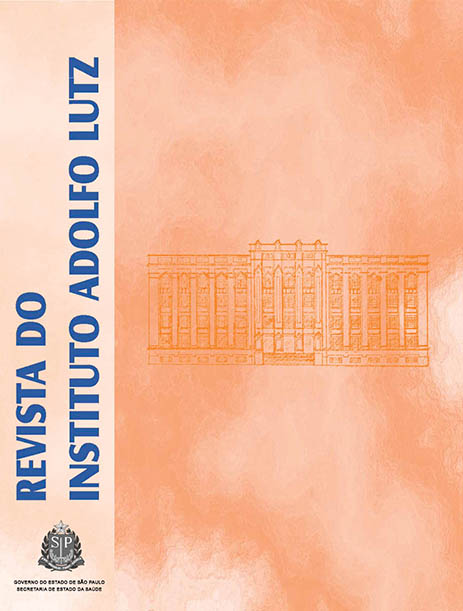Abstract
This study aimed: (i) at evaluating the process of quality control related to yellow fever vaccines used by the National Immunization Program (NIP) of the Brazilian Ministry of Health during the period from 2000 to 2008, by using survey data from the Sample Management System (SMS) of the National Institute for Quality Control in Health (INCQS) - Oswaldo Cruz Foundation (Fiocruz); and (ii) to propose the use of control charts, as useful tools for improving the processes of consistency of production and detection of systematic biases. The analysis to check the quality control of vaccines against yellow fever was comprised of the following parameters: (i) potency testing, (ii.) thermo stability, (iii.) residual ovalbumin contents (iv.) bacterial and fungal sterility assay, (v.) residual humidity contents, (vi.) bacterial endotoxin, and (vii.) vaccine production and respective quality control protocols stated by manufacturers. During the analyzed period, 1,031 yellow fever vaccine batches were analyzed by INCQS, which were produced by two manufacturers (97% by manufacturer A and 3% by manufacturer B), representing a total of 285 million individual doses. The present study indicates that at INCQS the process is under statistical control, and the specific causes of variation, if they eventually occur, are reasonably managed.
References
1. Brasil. Ministério da Saúde. Fundação Nacional de Saúde. Manual de Vigilância Epidemiológica de Febre Amarela. Brasília (DF); 2004. p.69.
2. Barnett ED. Yellow Fever: Epidemiology and Prevention. Clin Infect Dis. 2007;44: 850-6.
3. Centers for Disease Control and Prevention - CDC. Transmission of Yellow Fever Vaccine Vírus through breast-feeding – Brazil 2009. MMWR. 2010;12: 130-2.
4. Figueiredo LT. Emergent arboviruses in Brazil. Rev Soc Bras Med Trop. 2007;40: 224–9.
5. Farmacopeia Brasileira. 4ª ed, pt 2, fasc. 3. São Paulo: Editora Atheneu; 2001. p.124.
6. World Health Organization - WHO. Manual of laboratory methods for testing of vaccines used in the WHO Expanded Programme on Immunization. 1997. p.15-17.
7. Brasil. Ministério da Saúde. Manual de Vigilância Epidemiológica de Eventos Adversos Pós-Vacinação, Série Manual e Normas Técnicas em Saúde. 2a ed. Brasília (DF); 2008. p.74-80.
8. Hendriksen C, Arciniega JL, Bruckner L, Chevalier M, Coppens E, Descamps J, et al. The consistency approach for the quality control of vaccines. Biologicals. 2008;36:73-7.
9. Netto EJR, Leal EC, Delgado IF, Leandro KC. Avaliação do controle da qualidade realizado nos produtos vacinais para sarampo, caxumba e rubéola utilizados no PNI do Brasil no período de 1999 a 2007. Rev Inst Adolfo Lutz. 2010;69(3):408-15.
10. Brasil. Ministério da Saúde. Fundação Nacional de Saúde. Manual de vigilância epidemiológica dos eventos adversos pós-vacinação. 2ª ed. Brasília (DF); 2008.
11. Hayes EB. Acute viscerotropic disease following vaccination against yellow fever. Trans Roc Soc Trop Med Hyg. 2007;101(10):967-71.
12. Martins RM, Maia MLS, Santos EM, Cruz RLS, Santos PRG, Carvalho SMD, et al. Yellow Fever Vaccine Post-marketing Surveillance in Brazil. Procedia in Vaccinology. 2010;2(2):178-83.
13. Vasconcelos PFC, Luna EJ, Galler R, Silva LJ, Coimbra TL, Barros VLRS, et al. Brazilian Yellow and Fever Vaccine Evaluation Group. Serious adverse events associated with yellow fever 17DD vaccine in Brazil: a report of two cases. The Lancet. 2001;358 (9276):91-7.
14. Silva ML, Espírito-Santo LR, Martins MA, Silveira-Lemos D, Peruhype-Magalhães V, Caminha RC, et al. Clinical and Immunological Insights on Severe, Adverse Neurotropic and Viscerotropic Disease following 17D Yellow Fever Vaccination. Clin Vac Immunol. 2010;17(1):118–26.

This work is licensed under a Creative Commons Attribution 4.0 International License.
Copyright (c) 2011 Instituto Adolfo Lutz Journal
